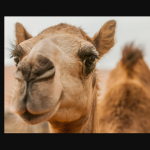Kuwaiti weddings became so expensive that the government came up with a campaign called; Marriage Comes First, as observed by Reuters. Western influence is partly to blame for the materialistic nature of today’s modern Kuwaiti weddings.
Traditionally the ceremony had more religious and cultural significance, a far cry from recent weddings that tend to be more about showing off and being the talk of the town.
A traditional Kuwaiti wedding proceeds as follows:
-
Both families would arrange an engagement once a suitable bride was found by a matchmaker.
-
The groom’s father provides money for the bride to buy a Daza or gift that consists of blankets, bed covers, two rolls of cloth and four expensive garments.
-
Select women take the gift to the groom’s father for approval either on a Thursday or Monday night. The women sing traditional Kuwaiti songs from the bride’s house to the groom’s house under the illumination of a lantern.
-
If he approves the gift, a sign of blessing the marriage, then the father in-law provides trousseau for the bride.
-
Culturally on the night of the wedding the groom would walk to his bride’s home in the company of his family and neighbors. They were greeted by female singers at the bride’s home.
-
Then a court official who writes marriage papers brought them for the groom, bride’s father, the bride and two witnesses to sign. This is called Al-melcha and it preceded a party called Jalwa was held. To celebrate the signing of the papers.
-
At the party the bride wore a green garment and sat on a special seat and female relatives would hold a green silk scarf over her head. They would lower and raise the scarf in rhythm to the traditional songs being performed.
-
She would then be carried on the seat to meet the groom.
-
The couple spent the first week at her parent’s home as newlyweds before family and neighbors escorted them in a procession to the groom’s home. It was believed bad omen for her mother to join the procession. The event is called Al-Tehwaal.
Modern Kuwaiti weddings closely resemble American weddings, where after a religious ceremony there is a reception and an after party. It is worthy to note that even traditional Kuwaiti weddings require government registration.
Bakhoor is among special lavish incense that is perhaps the only thing purchased for a Kuwaiti wedding that is not used at an American wedding.
The Budget
A normal wedding in Kuwait is said to cost about $115,000 or more while high end ones will clock at $3 million plus.
This amount adds up when factoring in the insistence of couples to have natural flowers from Holland, which cost a fortune. Others want imported gold decorations and cutlery, food from Paris and gifting their guests with expensive perfumes.
Wedding planners have had to fly in prominent singers that charge about $250,000 for less than two-hour performances and of eye-candy cakes that cost from $2,000 up to $10,000.
The rising trend of for-fame Kuwaiti weddings is what is encouraging eligible bachelors to have cold feet. This is elaborated by the fact that it’s the groom who pays for Mahar or dowry in cash that totals thousands of dollars. The Mahar is accompanied by the ring and other gifts. The groom is also responsible in providing a decent living place for his future wife.
Luckily the two families could come to an agreement and cost share unless the groom is in a position to foot the entire bill. It is common for the parties involved to end up in debt thereafter.
Another expense is the couple’s clothes.
The Couple’s Clothes
The most iconic groom’s attire is the bisht, a cloak that’s worn over a thawb complemented by a keffiyeh, which is the traditional male Arab headdress.
The groom offers the bride an al-shabkah, a jewelry set containing earrings, a ring, necklaces and bracelets that she will wear to the ceremony. They wore elaborate jillabeeya or a floor-length dress, a head scarf called a shalia, a black face mask to cover her face known as burqa and trousers that reached at the ankles called sirwal.
She also wore a large amount of gold jewelry, a special hairstyle and her hands and feet were painted intricate henna designs.
This becomes quite a pricey wardrobe but the Kuwaiti custom is to spend as much money as possible on a wedding.
The Al-Melcha
This is the religious signing of the Islamic marriage contract by the bride’s guardian and groom. The ritual is performed after evening prayers also known as isha, at the mosque or bride’s home called diwan. The Arabic contract is called Aked Al-Nekah.
Music and Food
Traditional Kuwaiti folk songs and dances usually dominate the wedding ceremony. One of the popular wedding performances involving swaying drums to the ground is known as Al-Fann. Al-Sameri is another song and dance where the dancer wearing a thoub, a loose cloak, performs with a covered face.
When it comes to eating there is always an assortment of traditional Kuwaiti delicacies but a frequent on the menu is roasted lamb served with saffron rice. Unfortunately alcohol is prohibited in the country but there are other endless options like coke.
Conclusion
Kuwaiti weddings are becoming more expensive due to a popular trend of showing off and the cultural habit of spending as much money on a wedding as possible. The government of Kuwait is known to offer financial support towards weddings and marriages but Kuwaiti wedding budgets seem to increase by the day. The effective solution at the moment practiced by youngsters is to abstain from the ceremony while they save probably for an expensive future event.



You must be logged in to post a comment.